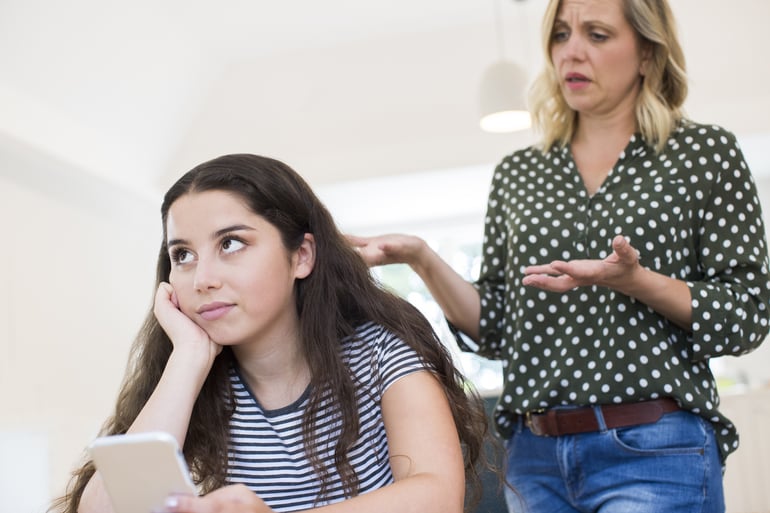
Many of us have a love-hate relationship with technology. We have technology at the tip of our fingers; whether it is through a smartwatch, phone, tablet, laptop, desktop, or TV - screens are available everywhere. One survey explains that 95 percent of teens have access to a smartphone, and 45 percent are online almost constantly. While there are many advantages to tech, young brains are also subject to serious side effects.
Screen Consumption Among Youth
Apps are specifically created to fit the different needs and wants of children, and a portion of screen time is spent on gaming, music, social media, fashion, videos, and education. While the intended use of apps may be to create new learning and skills, it can also come with dangerous avenues for young people, and children can be exploited and exposed to harmful media messages and images.
To be exact, U.S. adolescents spend an average of seven hours or more per day on screens for entertainment, and younger children spend almost five hours, according to a 2018 report. Worryingly, that doesn’t include time spent using screens for education and homework. Due to the COVID-19 pandemic, the majority of youth had virtual learning courses that contributed to double amounts of media time. The same study noted that young people who spent an average of 7 hours on screens are more than twice as likely to be diagnosed with depression or anxiety than those who spent less time. Excessive time with technology has been linked to behavioral health and mental health problems.
The Growing Concerns of Screen Time
Children can be influenced by anything they see or hear. With more and more access to technology, there are growing concerns about what screen time can do to children. For example, according to one special report, high social media use can be associated with delinquent behaviors, family conflict, depression, and sleep disturbances. Other findings showed that regardless of the developmental stage of the youth, excessive levels of screen time were associated with more sleep irregularities, which is linked to higher levels of youth behavioral health problems.
More examples of what too much screen time can lead to are poor academic performance, not enough physical or outdoor activity, self-insecurities, mental health disorders, fear of missing out, online bullying, and the list can go on. Not all screen time is negative, and it can offer many positives, but understanding the side effects can allow for more healthy relationships with technology.
What Is The “Right” Amount?
In today’s world of technology, we may never know the “right” amount of time to spend on it. However, the American Academy of Pediatrics (AAP) has recommended two hours or less for children 8 to 18 years old. Additionally, the AAP and the World Health Organization (WHO) call for no screen time for children in all countries until 18 to 24 months, and kids ages 2 to 5 should only have an hour or less. Although these are just recommendations, the AAP has a resource, Family Media Plan, where a family can work together and make a plan for their children and use the calculation tool to determine the best fit for them.
As studies continue to be developed about the ongoing effects of screen time, there are many helpful resources and programs to help youth with antisocial behaviors. Caregivers can stay alert with new media trends, monitor screen time and downloads, and watch out for signs of behavioral and mental health problems.
How To Help Youth With Serious Antisocial Behaviors
Although technology is not going away anytime soon, it is important to pay attention to children’s interactions with screens. Dr. Brian Primack, a professor of medicine and pediatrics and director of the Center for Research on Media, Technology, and Health at the University of Pittsburgh, says no one study can provide a “complete picture” of the effects of screens on young people’s mental health but “we now have enough evidence of concern that we should be exerting more caution than we are.”
Moreover, one program that can help youth and families experiencing serious externalizing, anti-social, at-risk behaviors is Multisystemic Therapy (MST). MST can support families to set boundaries and build healthy pro-social relationships between the youth, family members, peers, school, and community.
Multisystemic Therapy (MST) is an evidence-based alternative to incarceration or severe system consequences due to serious externalizing, anti-social, and/or criminal behaviors. MST effectively treats youth and their families by utilizing a built-in suite of services within the home, school, and community settings. Treatment is tailored to the family and their individual strengths and needs which could include but is not limited to the following types of interventions: Family Therapy, Cognitive Behavioral Therapy, Drug and Alcohol treatment, Mental Health Services, Peer Ecology Assessment and Intervention, Trauma-informed treatment, and Educational/ Vocational Support.
If you or someone you know is interested in learning more about Multisystemic Therapy, contact us here.

